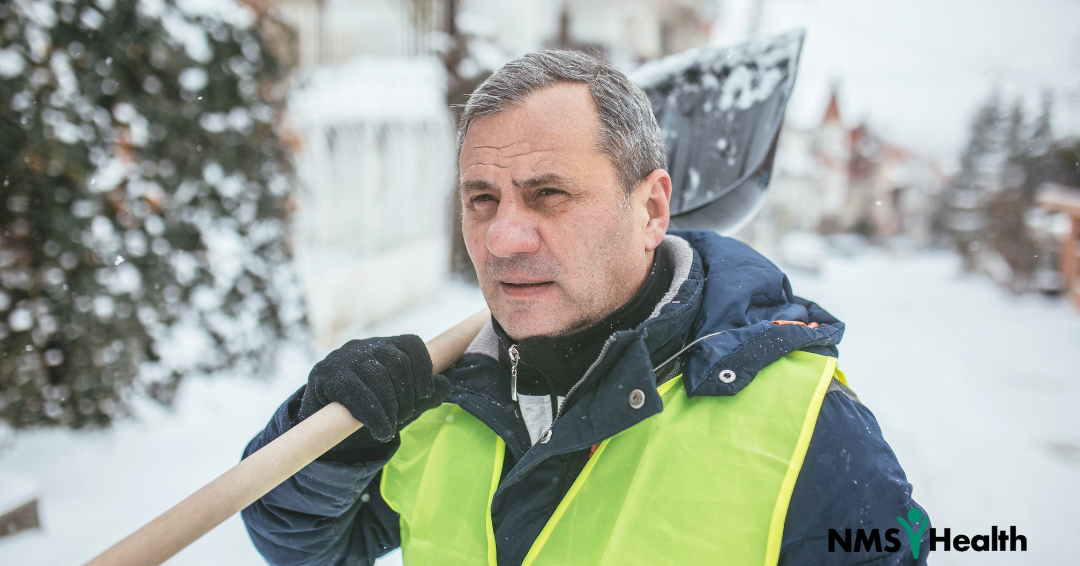The weather outside is frightful, and your workers may not feel so delightful. Each year hundreds of people are injured or lose their lives due to winter weather. Whether its power outages, icy roads, or mounting snow totals, winter can be a dangerous time for workers. Employees may be faced with a variety of workplace hazards after snowstorms.
While some workers are able to stay inside and wait out a storm, others are required to venture out. These may include emergency personnel, law enforcement, firefighters, utility workers, government personnel, and sanitation workers. Working during a winter storm is risky. According to the National Weather Service, about 70 percent of injuries during winter storms result from vehicle accidents, and about 25 percent of injuries result from being caught out in the storm. These injuries continue after the snow is done falling as well.
Winter Storm Driving
It is the employer’s responsibility to ensure that employees are driving safely. All employees should be trained to recognize winter storm driving hazards such as driving on icy or snow covered roads. While ice can cause slippery conditions, heavy snow is also dangerous. Snow can impede visibility and cause drivers to become stranded. OSHA suggests that the following vehicle systems be checked prior to a storm:
- Brakes: Brakes should provide even and balanced braking. Also check that brake fluid is at the proper level.
- Cooling System: Ensure a proper mixture of 50/50 antifreeze and water in the cooling system at the proper level.
- Electrical System: Check the ignition system and make sure that the battery is fully charged and that the connections are clean. Check that the alternator belt is in good condition with proper tension.
- Engine: Inspect all engine systems.
- Exhaust System: Check exhaust for leaks and that all clamps and hangers are snug.
- Tires: Check for proper tread depth and no signs of damage or uneven wear. Check for proper tire inflation.
- Oil: Check that oil is at proper level.
- Visibility Systems: Inspect all exterior lights, defrosters (windshield and rear window), and wipers. Install winter windshield wipers.
An emergency kit with the following items is recommended in vehicles:
- Cellphone or two-way radio
- Windshield ice scraper
- Snow brush
- Flashlight with extra batteries
- Shovel
- Tow chain
- Traction aids (bag of sand or cat litter)
- Emergency flares
- Jumper cables
- Snacks
- Water
- Road maps
- Blankets, change of clothes
Shoveling Injuries
According to one study, snow shoveling is responsible for thousands of injuries and as many as 100 deaths nationwide each year. When workers are cleaning up during and after a snowstorm, they are not only are they exposed to cold temperatures. Snow shoveling can put workers at risk for dehydration, overexertion, exhaustion, back injuries, or heart attacks. In addition to following guidelines for avoiding cold stress, employees should be instructed to take precautions to avoid injury.
The National Safety Council recommends the following tips to shovel safely:
- Do not shovel after eating or while smoking.
- Take it slow and stretch out before you begin.
- Shovel only fresh, powdery snow; it's lighter.
- Push the snow rather than lifting it.
- If you do lift it, use a small shovel, or only partially fill the shovel.
- Lift with your legs, not your back.
- Do not work to the point of exhaustion.
- Know the signs of a heart attack, and stop immediately and call 911 if you're experiencing any of them; every minute counts. Don't pick up that shovel without a doctor's permission if you have a history of heart disease.
Clearing Snow from Heights
Each year, workers are seriously or fatally injured while removing snow from rooftops and other building structures. While this type of snow removal is often done to prevent overloading or collapse, it is an extremely hazardous endeavor. Employees are often exposed to slippery surfaces and electrical hazards. They also may not be able to see if other hazards, such as skylights, are present. Employers should protect their workers from these hazardous work conditions by:
- Using snow removal methods that do not involve workers going on roofs, when and where possible.
- Evaluating loads exerted on roof or structure (e.g., total weight of snow, workers and equipment used), compared to the load limit of the roofs.
- Requiring that workers use appropriate PPE, such as personal fall arrest systems and non-slip boots.
- Ensuring that workers are trained and using ladders and aerial lifts safely.
Generator Safety
Generators are extremely helpful when dealing with power outages. However, generators can be dangerous if they are not used properly.
- Generators should always be used outdoors and at least 20 feet away from windows, doors and attached garages.
- Keep the generator dry and protected from rain or flooding. Touching a wet can cause electrical shock.
- Before refueling, always turn off the generator and allow it to cool for 15-20 minutes
- Always connect the generator to appliances with heavy-duty outdoor extension cords.
- Keep a fire extinguisher nearby.
- Follow manufacturer’s instructions carefully.
- Make sure workplace carbon monoxide detectors are in working order.
When a winter storm hits, and your employees are faced with workplace hazards after snowstorms it is important to keep their health and safety at the forefront. With proper planning, training, and equipment, workers can safely handle winter weather and return home to their loved ones.


